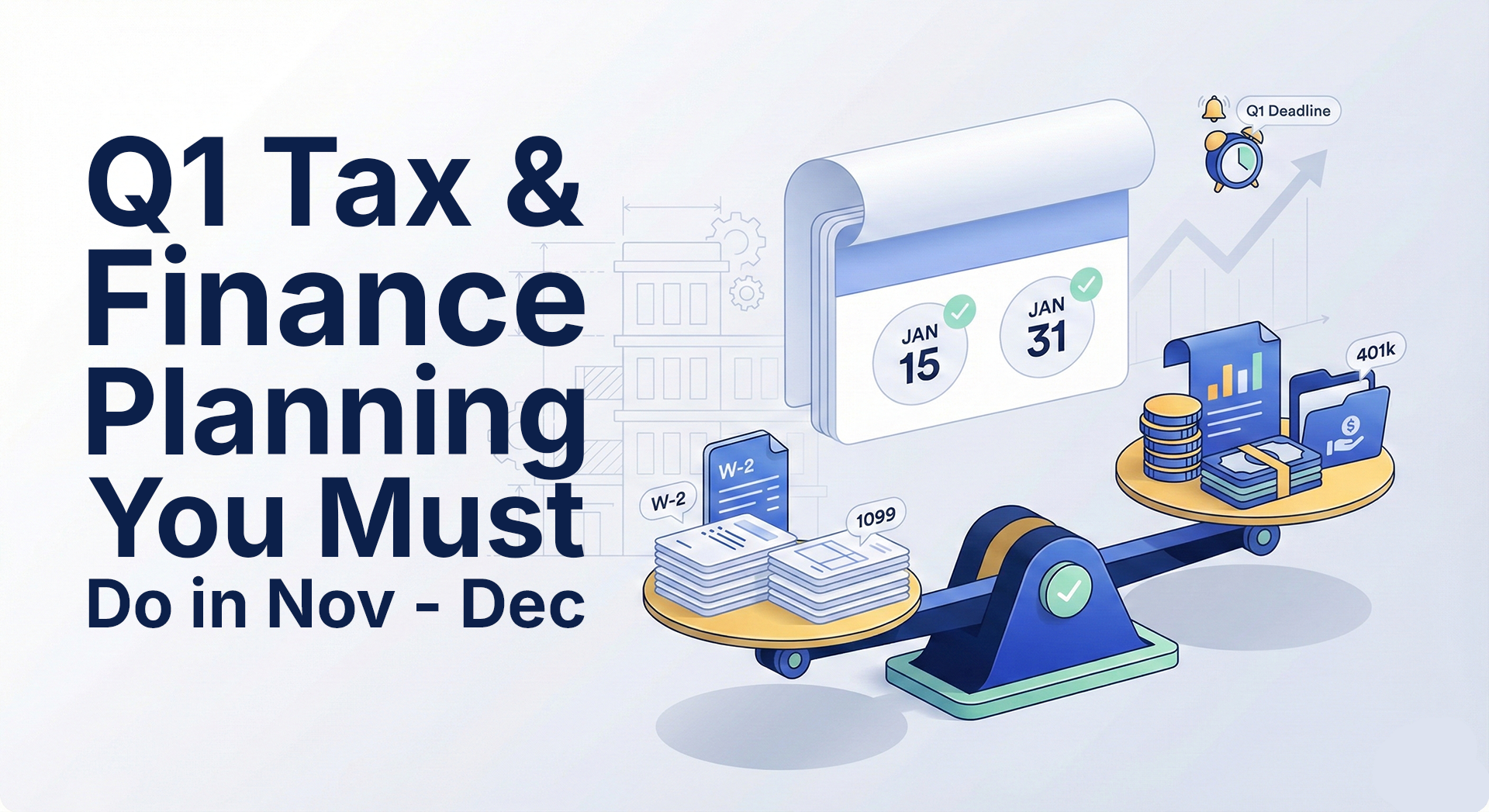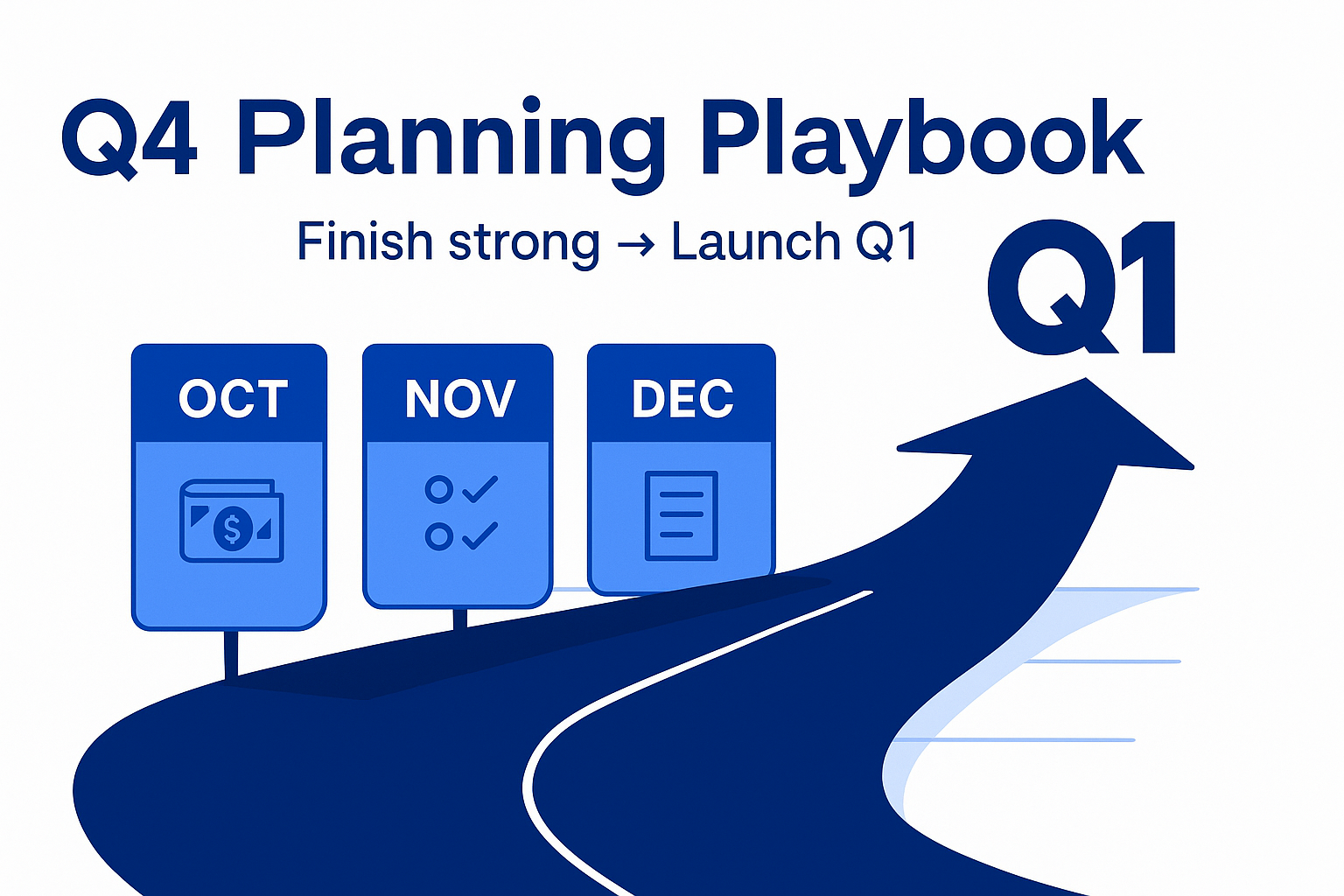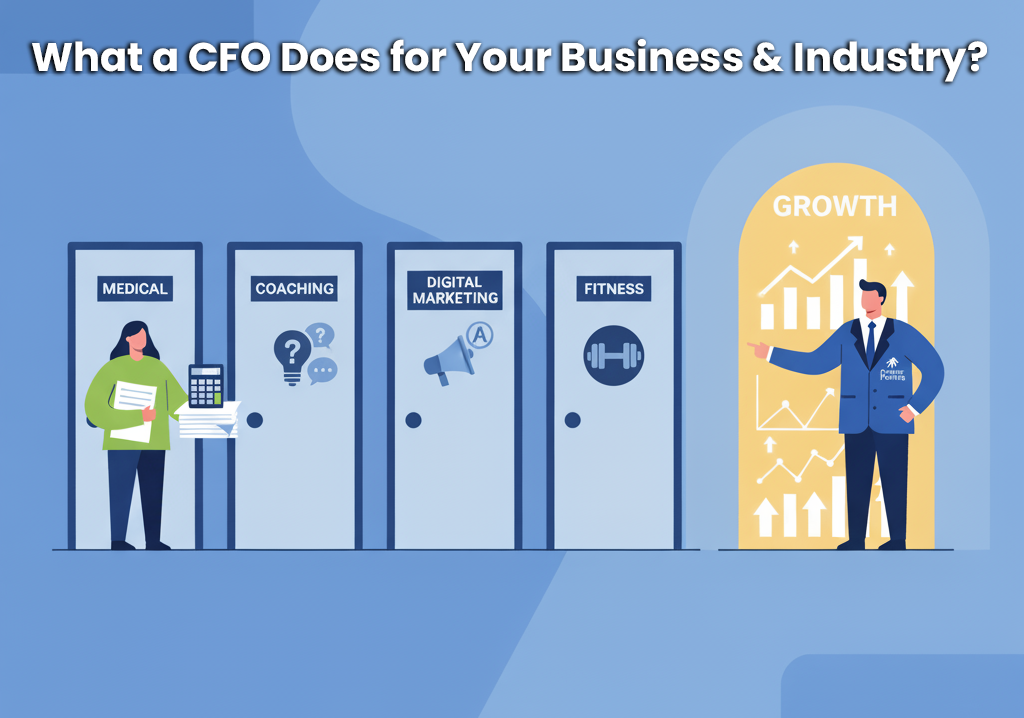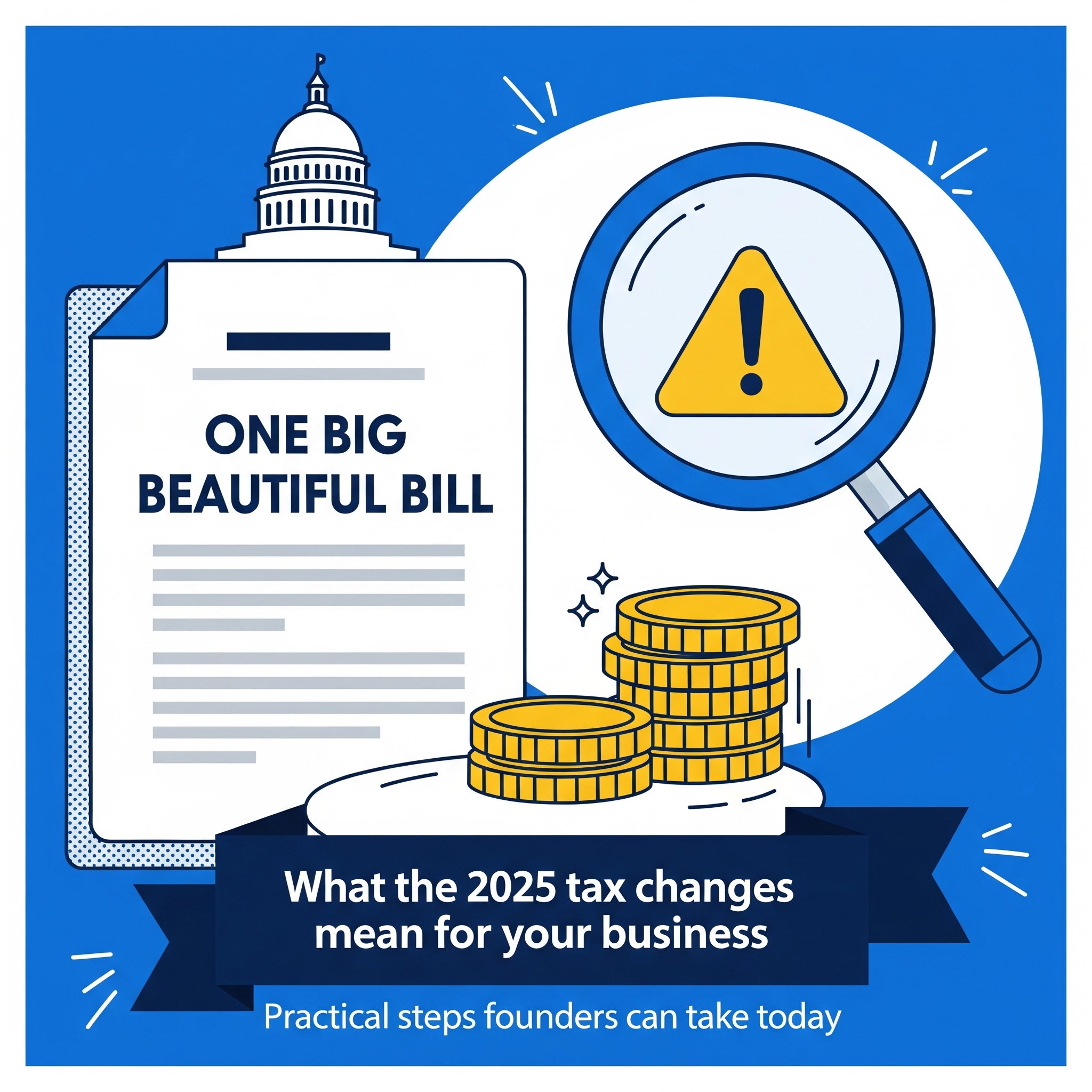
In case you haven’t heard, a massive tax bill was passed on July 4th, 2025. Happy Declaration of Independence Day, America! I’m sure our Founding Fathers had no idea we’d turn the U.S. Tax Code into the monster of a document it is today.
But you’re probably not here for a history lesson. You’re asking, “What’s in it for me?” The CleverProfits tax team has done their homework and carefully selected the most important changes and updates for your reading and tax planning pleasure.
The Most Applicable Provisions
- Overtime isn’t taxed. We know this sounds too good to be true. You only get up to $25,000/year of tax-free overtime.
There is a lot of opportunity for S corp owners to take advantage of this. We can also expect a Treasury Regulation to come out sooner or later because the tax loophole possibilities are definitely there (pay yourself $25,000 in overtime and you get a free deduction). - Up to $10,000 of auto loan interest is deductible for tax years 2025 – 2028. This does not mean you should go buy that GT3 RS to take advantage of this deduction, but if you’re already buying or paying for a car, don’t forget about this deduction!
- 100% bonus depreciation is back! This only applies for property acquired after January 19, 2025.
- Mortgage insurance premiums are deductible again. Maybe you didn’t notice this deduction was gone for the past three years, but in case you did – it’s back.
- The qualified business income (QBI) deduction is now permanent. This is up to 20% of your business’s taxable income.
Less Applicable Provisions (Also More Complicated and Confusing)
- The state and local tax (SALT) deduction ceiling has been raised to $40,000 for 2025.
Why wouldn’t this apply to me? Most taxpayers aren’t paying more than $40,000 in state taxes in a year. If you are, you’re in the top 5% of earners in a state with high income taxes (California, for example).
What makes this complicated and confusing?
a. There is a 1% increase in the ceiling each year through 2029
b. The ceiling returns to $10,000 in 2030.
c. The deduction is reduced by 30% of the amount by which modified adjusted gross income (MAGI) exceeds a certain threshold. For 2025, this threshold is $500,000 for taxpayers who are married filing joint and $250,000 for taxpayers who are filing single or separate. To make things more complicated, this threshold also increases 1% each year through 2029.
d. The deduction can’t be reduced below $10,000.
e. States created the pass-through entity tax (PTET) election to circumvent this deduction ceiling. Many state PTET regimes are set to expire in 2025, so we’ll all be on the lookout for state legislation that extends these regimes. - You can elect to deduct or capitalize research and development (R&D) expenditures. Capitalization was required starting in 2022.
Why wouldn’t this apply to me? Not many taxpayers qualify for the R&D credit. Please reach out to us if you believe your business is working on any projects that may qualify!
What makes this complicated and confusing? Small businesses (annual revenue below $31 million) can elect to claim the deduction retroactively through 2022 by amending previous tax returns. - For taxpayers in the top tax bracket, itemized deductions are reduced by 2% starting in 2026. We recommend accelerating deductions from 2026 to 2025 for taxpayers who fall in the top tax bracket so they aren’t limited by this reduction.
Why wouldn’t this apply to me? Taxpayers get the benefit of the standard deduction or itemized deductions (“or” means not both)
What makes this complicated and confusing?
a. Itemized deductions include state taxes, property taxes, mortgage interest, and charitable contributions. If the sum of your itemized deductions isn’t more than the standard deduction, it makes no sense to take the itemized deductions. The standard deduction changes every year with inflation, but it’s $31,500 for taxpayers who are married filing joint, $15,750 for taxpayers who are filing single or separate, and $23,625 for taxpayers who are filing head of household.
b. The top tax bracket changes every year, but for 2025, it’s:
$751,600 of taxable income for married filing joint
$626,350 of taxable income for single or married filing separate - Only charitable deductions that exceed 0.5% of your adjusted gross income (AGI) are deductible. If you’re a charitable person, now you have to be extra charitable to reap the tax benefits.
Why wouldn’t this apply to me? Same reasoning mentioned for itemized deductions above. Charitable deductions are part of itemized deductions.
What makes this complicated and confusing? If you take the standard deduction instead of itemized deductions, you can deduct all your charitable deductions up to $1,000.
FAQ’s
Q1: What is the One Big Beautiful Bill (OBBB) and who does it affect?
A: The OBBB is a 2025 federal tax bill that changes personal and business tax rules affecting deductions, depreciation, and credits. It impacts business owners, high-income taxpayers, and owners of pass-through entities who may need to revise tax planning and compliance.
Q2: Is overtime pay tax-free under OBBB?
A: OBBB allows up to $25,000/year of overtime to be received tax-free. This may create planning opportunities—especially for S-corp owners—but taxpayers should expect clarifying Treasury guidance.
Q3: Can I deduct auto loan interest after OBBB?
A: Yes. For tax years 2025–2028 up to $10,000 of auto loan interest can be deductible. If you already plan to buy a vehicle, track interest and documentation for the deduction.
Q4: Is bonus depreciation available again?
A: Yes. OBBB restores 100% bonus depreciation for qualifying property acquired after January 19, 2025. This allows immediate first-year expensing for many assets placed in service after that date.
Q5: Are mortgage insurance premiums deductible under the new law?
A: Mortgage insurance premiums are deductible again under OBBB. Keep records of premiums paid and consult a preparer to see whether you should itemize deductions to claim this benefit.
Q6: What happens to the Qualified Business Income (QBI) deduction?
A: The 20% QBI deduction is made permanent under OBBB. Eligible pass-through owners should evaluate whether current income or entity elections optimize their QBI benefit.
Q7: How did OBBB change the SALT deduction cap?
A: The SALT cap rises to $40,000 for 2025 and increases by 1% annually through 2029, then reverts to $10,000 in 2030. The allowable SALT deduction is phased down by 30% of MAGI above certain thresholds, so high-income filers must model the effect.
Q8: What is the PTET workaround and does it still matter?
A: The pass-through entity tax (PTET) was created to help owners bypass SALT caps. Many state PTET regimes expire or change in 2025, so owners should confirm their state’s rules and whether PTET remains available as a planning tool.
Q9: Can businesses change how they handle R&D costs under OBBB?
A: Small businesses can elect to deduct R&D costs rather than capitalize them. Under certain conditions, small businesses with < $31M revenue may be able to claim the deduction retroactively to 2022 by amending past returns. Consult a tax advisor for eligibility and filing steps.
Q10: Does OBBB limit itemized deductions for high earners?
A: Yes. Beginning in 2026 itemized deductions for taxpayers in the top bracket are reduced by 2%. Taxpayers near the top bracket should evaluate accelerating deductible expenses into 2025 where practical.
Q11: How did OBBB change charitable deduction rules?
A: Only charitable contributions exceeding 0.5% of AGI are deductible for itemizers under OBBB. If you take the standard deduction instead, you may still claim limited charitable deductions (up to a statutory cap). Track gift amounts and retain receipts.
Q12: What immediate steps should business owners take after OBBB?
A: Practical next steps: (1) update 2025 tax models and cash-flow forecasts, (2) review entity elections (S-corp vs. LLC vs. C-corp) for overtime and QBI impacts, (3) inventory planned equipment purchases for bonus depreciation timing, (4) consult on SALT/PTET implications for your state, and (5) preserve documentation for any new deductions. A tailored review with a tax advisor is recommended.
As you can see, there are a lot of interconnected pieces and nuances in this tax bill. The tax nerds here at CleverProfits love analyzing our clients’ specific circumstances to determine the most beneficial tax scenarios. Get in touch with us to figure out how you can make the One Big Beautiful Bill Act work for you!
The Clever Writing Team
The CleverProfits writing team includes various team members in Advisory, Financial Strategy, Tax, and Leadership. Our goal is to provide relevant and easy-to-understand financial content to help founders and business leaders reach their true potential.
TABLE OF CONTENTS
- 2025 tax bill, 2025 tax changes, auto loan interest deduction, bonus depreciation 2025, bookkeeping & tax, business tax changes 2025, business tax checklist, charitable deduction rules 2025, CleverProfits tax insights, fractional CFO tax planning, itemized deductions 2025, mortgage insurance deduction, OBBB, One Big Beautiful Bill, overtime tax-free, pass-through entity tax, PTET, QBI deduction, R&D deduction 2025, SALT cap 2025, small business tax planning, state tax planning, tax compliance, tax credits 2025, tax FAQ 2025, tax planning for startups, tax strategy for business owners
